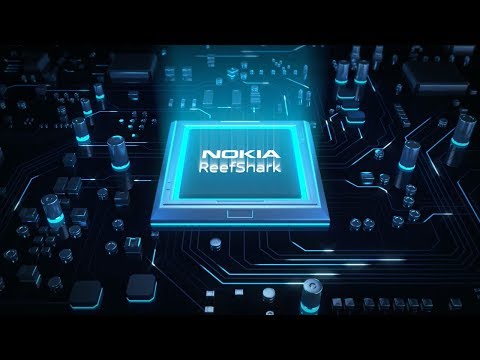
Case Globalstar: 6 ways to leverage their spectrum asset
Twitter: @nokianetworks

In our industry, most people would agree that spectrum is a hot topic – it’s the most valuable resource for a wireless company. But it’s become a crucial issue because, as we all know, spectrum is finite. Wireless operators must deploy this resource in ways that not only provide coverage wherever a user might want to consume bandwidth, but also provide needed capacity for a good customer experience. This coverage and capacity dynamic has driven substantial developments in the wireless ecosystem over the past few years, especially at Nokia.
It’s clear up here for Globalstar spectrum
Nokia customer Globalstar Inc., a U.S. based provider of mobile satellite voice and data services, is in the enviable position of having 2.4 GHz spectrum that works everywhere, meaning it has been globally allocated. 2.4 GHz spectrum is in the sweet spot from a physics perspective because it’s good for both coverage and capacity. Although it’s not yet a 3GPP standardized spectrum band, it has been approved by the Federal Communications Commission and recently in other countries. It’s remarkably clean meaning it’s clear, has no co-channel interference and provides network benefits for both indoor and outdoor deployments.
Globalstar turned to Nokia to help determine the band characteristics for its available spectrum and identify potential application options. Nokia’s Network Planning and Optimization (NPO) team conducted a small cell network study of Globalstar’s 2.4 GHz spectrum as compared to a similar HetNet network in 2.1 GHz. The study proved the versatility of Globalstar’s spectrum, showing that operators with a small cell network could benefit from Globalstar’s clean spectrum, while those without small cell networks could benefit from its huge capacity.
In our study, Globalstar’s spectrum outperformed outdoor small cell deployments by 20%, while requiring 33% less infrastructure. For indoors in an urban office environment, we were able to deploy approximately half the access points required since the band has no interference from macro towers operating in the same frequency. The full report can be seen here. The team went a step further to also provide six business model options for Globalstar to consider.
“We were excited to work with Nokia’s NPO experts to help determine how to best monetize and maximize the use cases of our spectrum asset so we can deliver the highest quality experience to the end users,” said Jay Monroe, chairman and CEO of Globalstar.
6 ways to monetize & maximize the spectrum
- Lease the spectrum to incumbent operators – This provides extra capacity for operators and uses their own RAN equipment and services. Operators can use clean spectrum without incumbrance and it supports standard capabilities like Carrier Aggregation, roaming and redirection. For Globalstar, this is a simple revenue model without any operational burdens.
- Dedicated in-building small cell spectrum – The analysis clearly shows the difficulties presented by macro interference to small cell deployments. Offering a dedicated, clean spectrum band would dramatically improve the performance of these HetNets and significantly reduce the cost to deploy them. Globalstar could lease the spectrum to one carrier nationwide or carriers in geographic regions that wanted to reduce the strain on their expensive macro tower infrastructure.
- Use the spectrum as a satellite service enhancement – By deploying RANs in Globalstar’s high use areas, such as air terminals, shipping ports, military bases or cargo handling facilities, Globalstar can both provide satellite offload and support high data rates and advanced applications. Enhanced services are provided to customers where they normally congregate, and for these customers there is a layer of satellite redundancy in the event of disruptions in terrestrial networks.
- Lease spectrum for private LTE systems to non-carriers including Digital Automation as a Service – Cable companies are increasingly interested in pursuing wireless services themselves. Globalstar’s spectrum provides an opportunity to add a private LTE network on top of their dense cable plant. Alternatively, as the in-building networks are further developed there may be an opportunity to include Globalstar’s band as a private LTE service on top of neutral host models.
- Directly provide private services to enterprises – By offering private LTE systems directly to enterprises, Globalstar provides spectrum, equipment and services to end user customers, which provides direct control over the user experience and maximizes private LTE system revenue opportunities. These deployments of Globalstar’s spectrum could be done while several of these other options are pursued simultaneously.
- Mass market product enablement licensing – Globalstar could license spectrum to ODM manufacturers for use in mass market. This would include unrestricted use and products distributed globally. This option could address the Internet of Things or Connected Car markets.
No matter what Globalstar decides to do, Nokia will be there to partner with them – in the U.S. and around the world. We are also lending our support to the 3GPP standardization process and equipment manufacturing enablement, which are critical for the spectrum’s success.
Download the full report here: Globalstar: 2.4 GHz Spectrum Leasing For Small Cell Deployments
Visit our webpage to read more about our NPO services.
Share your thoughts on this topic by replying below – or join the Twitter discussion with @nokianetworks using #spectrum #5G #LTE #3GPP #services
The post Case Globalstar: 6 ways to leverage their spectrum asset appeared first on Blog | Nokia.
Source: Nokia Networks
—











